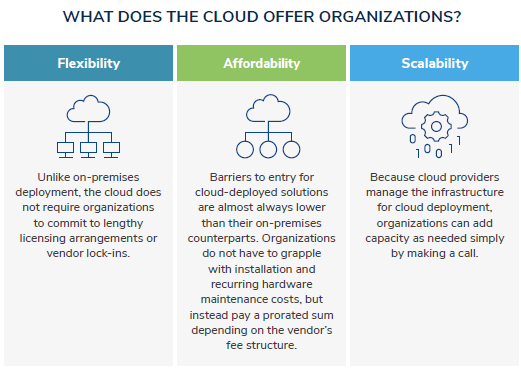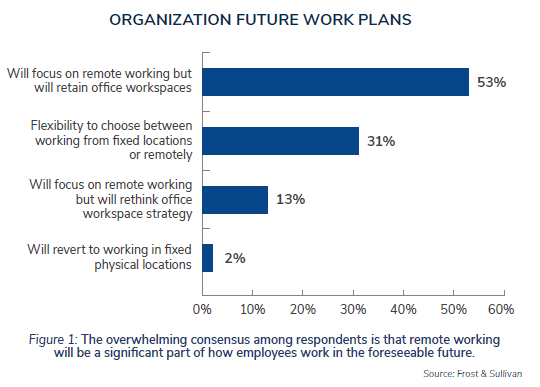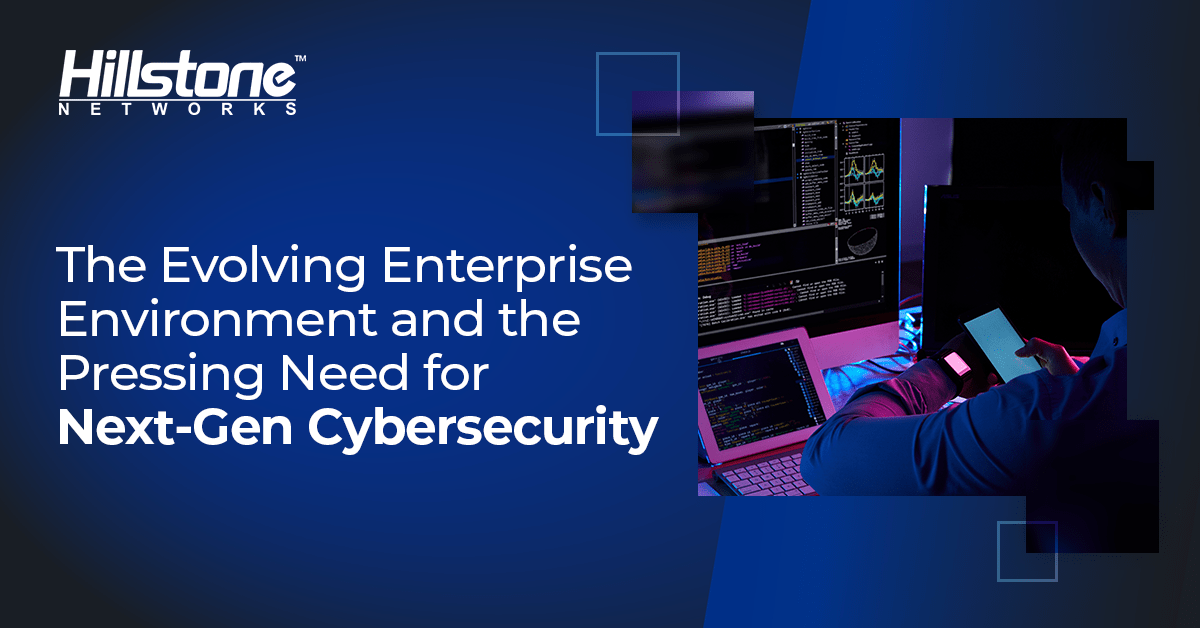Last week, we discussed how enterprises’ modernization needs have resulted in rapid adoption of XDR technology. Today, we’ll evaluate the adoption of XDR from a different perspective: the rapidly changing threat landscape and the need for the advocacy of a cyber-resilient solution.
Evolving Enterprise Environment
The modern enterprise environment bears little resemblance to the past. An organization’s entire information technology (IT) stack no longer consists entirely of owned on-premises solutions. Instead, the ongoing move to the cloud has allowed businesses more flexibility, affordability, and scalability.
According to a Frost & Sullivan survey of security decision makers, 43% of respondents across the United States, Australia, and Singapore indicated their organizations were cloud first, with most workloads in the cloud. Despite the positive uptake, only a third of respondents had secured their cloud workloads across all environments. Unsurprisingly, monitoring cloud environments is the second-largest operational challenge that cloud security teams face—exceeded only by the cost of operating monitoring solutions in the first place.

The move to the cloud is closely related to the increasingly wide distribution of the workforce. Spurred by perpetual COVID-19 concerns, most organizations have acknowledged that they will have at least some degree of remote working in their future work plans, and organizations that previously relied on foot traffic have accepted that most of their sales touchpoints will now be online. To illustrate, the eCommerce share of global retail sales grew from 16% to 19% in 2020,[1] totaling $26.7 trillion in revenue.
These changes mean that organizations are now even more dependent on maintaining their online websites and services’ uptime, underlining the necessity to keep them secure.

The Internet of Things (IoT) and operational technology (OT) are also undisputed points of significance in the evolution of the enterprise environment. The lines between traditionally separated IT and OT are blurring as industrial enterprises seek to drive efficiency in their production processes.
In a survey conducted by Frost & Sullivan, 45% of respondents deem robotics the most important emerging technology for digital transformation (DX), while 32% of respondents consider the IoT the most important. Despite their benefits to organizations, the IoT and OT expand the threat surface as adopters introduce additional avenues of attack not typically covered by IT-oriented security solutions.
In the IT space, organizations do not optimize legacy security solutions for the fast-changing enterprise environment and are thus left dangerously vulnerable to new threat vectors. These changes have also made it exceedingly difficult for organizations to keep track of their distributed and varied assets, as little uniformity exists between deployments, application types, device types, and user locations.
Shifting cybersecurity thinking towards detection and response
The changes and challenges above converge at the same conclusion: a change in thinking about cybersecurity is needed.
Legacy solutions will still have their place in certain environments, but organizations increasingly need products that are compatible and optimized for remote, cloud-centric, and mixed IT/OT environments. One major area of focus in modernizing cybersecurity is in detection and response – essentially the processes associated with detecting and addressing all threats coming into and out of the organization.
The cybersecurity companies cognizant of this new demand have invented a solution that can help organizations improve detection and response but also enhance the capabilities of their existing cybersecurity deployments. Dubbed XDR, Extended Detection and Response seeks to fill the gaps inherent in extant Endpoint Detection and Response (EDR) and SIEM simultaneously.
XDR integration can better protect and respond to threats in the evolving enterprise
By design, XDR is a flexible, easy-to-integrate, comprehensive, and comprehensible security solution for organizations dealing with extensive technology sprawl. For one, XDR integrates with as many data sources as possible and collects more contextual metadata—giving security teams the ability to generate insights from across the IT/OT environment. Moreover, D&R becomes cross-layered across these data points, mitigating the tunnel vision that sometimes comes from traditional methods such as EDR.
Hillstone Networks is one of the few vendors that already have a working XDR solution on offer and has leveraged its significant experience in the cybersecurity industry to provide organizations with a convenient means to transform their security postures to one better suited for the modern threat landscape and evolved enterprise environment.
To learn more about how the rapidly changing threat landscape has pushed the industry toward XDR adoption, get access to the full whitepaper here.
[1] Global eCommerce jumps to $26.7 trillion, fueled by COVID-19, United Nations, 2021.



